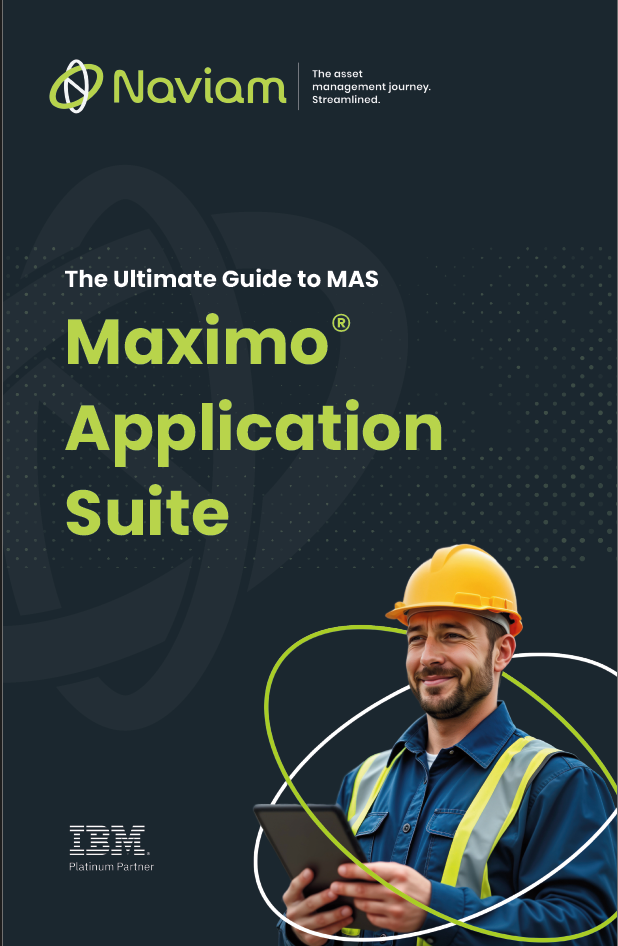
Resources
Outgrowing Corrigo: Why Enterprises Turn to IBM Maximo for Comprehensive Asset Management
Erin Pierce
October 31, 2025


As organizations scale, their needs evolve beyond simple work order tracking and maintenance scheduling. Platforms like Corrigo have long served as entry-level tools for facility management that are ideal for managing service requests, vendors, and preventive maintenance across smaller portfolios. It’s user-friendly, quick to onboard, and great for keeping the basics running smoothly. I’ve seen Corrigo at its best, especially in multi-site retail, hospitality, or food operations where keeping equipment online and service calls moving is everything.
However, when asset complexity grows and maintenance, compliance, or predict failures become critical to operations, many enterprises find themselves hitting Corrigo’s ceiling.
That’s when IBM Maximo can enter the conversation, delivering a comprehensive, enterprise-grade Enterprise Asset Management (EAM) and Asset Performance Management (APM) solution built for scalability, integration, and long-term asset health.
Corrigo earns its reputation for simplicity.
It’s cloud-based and mobile-first, which makes it easy to roll out across a dispersed footprint. The JLL vendor network gives users quick access to qualified contractors, and its SmartNTE (“Not-To-Exceed”) features help control costs per work order.
It’s ideal for:
But here’s the problem: Corrigo doesn’t manage assets, it manages tasks. Enterprises may encounter challenges that Corrigo can’t easily solve:
There’s no native support for asset hierarchies, calibration tracking, or lifecycle modeling. Equipment may be listed, but it’s not part of an intelligent ecosystem that understands condition, performance, or criticality.
This is where IBM Maximo fundamentally changes the game.
Maximo moves beyond “fix it when it breaks” toward data-driven asset performance management. In the Maximo Application Suite (MAS), everything from work orders and sensors to analytics and reliability lives in one connected platform.
Enterprises migrating from Corrigo to Maximo often find they can retain simplicity while unlocking scalability and enterprise asset intelligence that were previously out of reach.
Key MAS modules include:
A practical example:
In Corrigo, a broken freezer triggers a work order after it fails.
In Maximo, a sensor detects rising compressor temperature, flags a potential issue, and creates a proactive maintenance task, days before downtime occurs.
That’s the difference between logging maintenance and preventing failure.
For organizations in heavily regulated industries like energy, manufacturing, pharma, and utilities, compliance isn’t optional.
Corrigo provides inspection logs and spend tracking, but it stops there.
Maximo, by contrast, includes a calibration module with full traceability: audit trails, certification records, and version-controlled procedures that align with ISO, FDA, FAA, and other regulatory frameworks.
Why does this matter?
When you need to prove calibration accuracy or show maintenance history for a critical system, Maximo provides evidence, not just work orders or service request tickets.
Corrigo’s vendor marketplace is the highlight of the system: fast, flexible, and great for organizations that rely on third-party contractors.
But as companies mature, vendor management evolves into procurement strategy.
Maximo integrates with ERP systems like Oracle and Workday to connect how work drives business value, supporting:
Corrigo’s appeal lies in its plug-and-play SaaS model that is light, fast, and easy to adopt. However, there are some constraints to integrations and extensions of core modules that limit its overall capabilities.
IBM MAS scales much further. Built on Red Hat OpenShift, it supports hybrid and multi-cloud deployments, modular licensing, and enterprise integrations.
Organizations can start small with Manage and expand into Monitor, Health, and Predict as digital maturity grows while remaining under one platform license.
It’s the difference between a system that runs today’s work orders and a platform that scales with a strategy geared towards planning for the future.
At Naviam, we help enterprises navigate the journey from basic CMMS to intelligent EAM with IBM Maximo.
From readiness assessments to migration planning, our team ensures your transition is smooth, scalable, and delivers measurable outcomes. To learn more about Naviam’s EAM solutions and services or to take our Naviam Cloud+ assessment, contact us today!
Discover everything you need to know to modernize your asset management strategy.
Inside, you’ll learn:


ActiveG, BPD Zenith, EAM Swiss, InterPro Solutions, Lexco, Peacock Engineering, Projetech, Sharptree, and ZNAPZ have united under one brand: Naviam.
You’ll be redirected to the most relevant page at Naviam.io in a few seconds — or you can
go now.